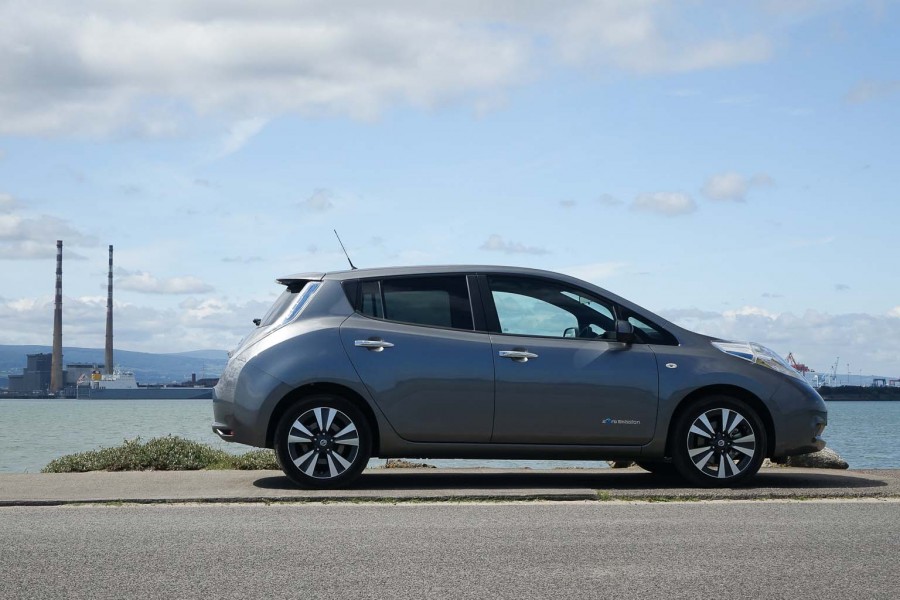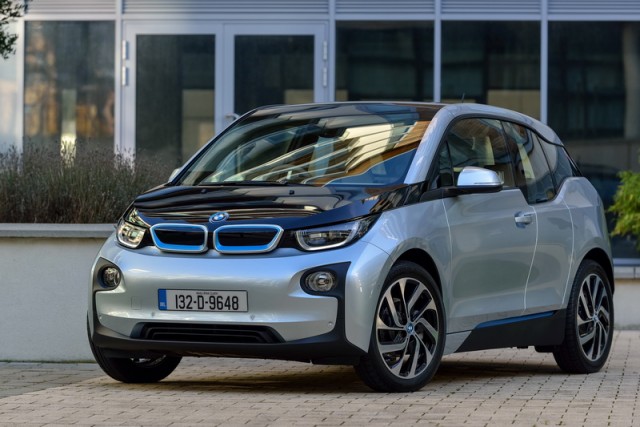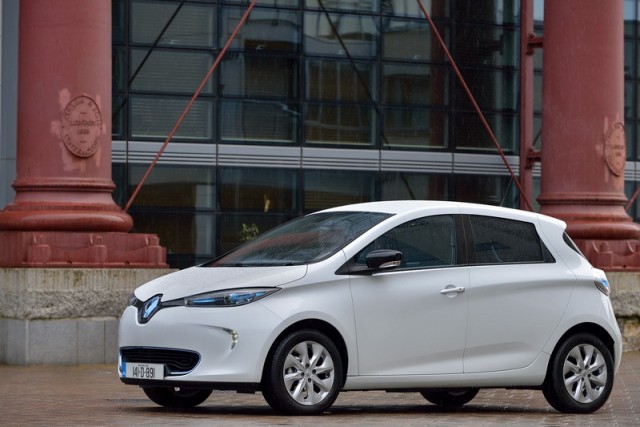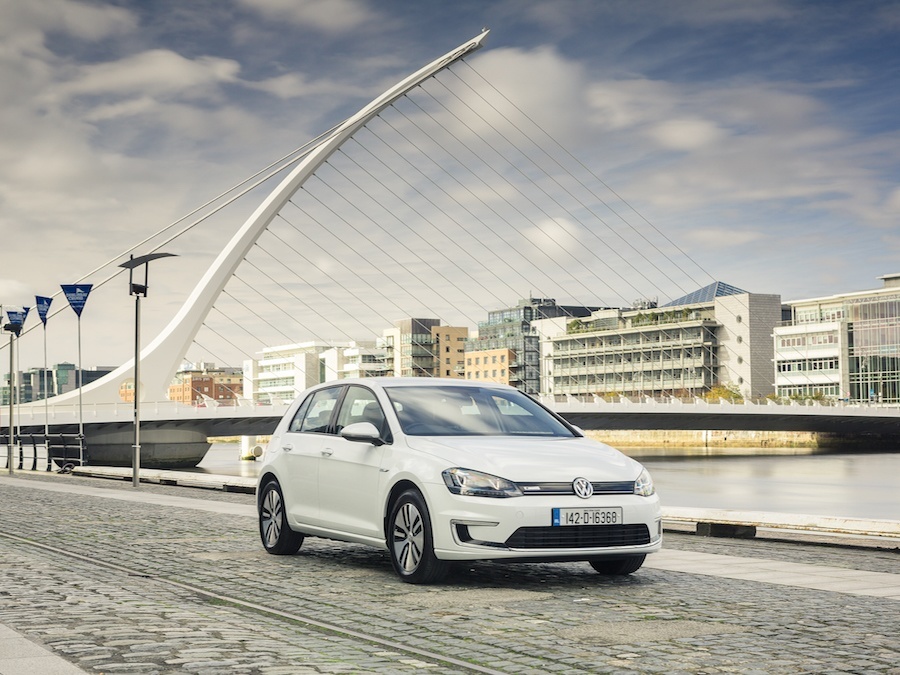Good: extra range is useful, avant-garde styling, comfort, low-speed refinement, running costs
Not so good: still not cheap, still some sweaty palms on longer journeys, dark interior looks dowdy, noisier than you might expect at speed
Leaf tethered securely to a fast-charger, it wasn't long before I discovered range anxiety's more insidious, slow-burning successor. Coffee-lasting time. For how long can you nurse a cup of joe? Should you go for the cheap and nasty option, with the oily film on the top, so as to maximise value (and working on the assumption that you will need another before the battery-powered Nissan has chugged down a full charge) or do you splash out on a nice, proper cup of steaming Americano, and try and make it last for the time required to pour a full set of lithium-ions into the new 30kWh battery stack? This, then, is the new challenge of electric car ownership.
Well, it is if you want to tackle a longer journey and that, expressly, is the job of the new version of the Nissan Leaf. Launched in 2010, winner of the European Car of the Year (the first electric car to snag the prize) and to all intents and purposes the first truly popular electric car on sale (225,000 sales around the world and climbing) the Leaf has always been slightly hobbled by its range. It arrived with a notional 160km one-charge range, and that slowly trickled up a bit to around 180km, but those numbers are somewhat aspirational. Use your right foot, or the heating or air conditioning a bit too much, and you'd soon see that range plummet and that's when the cold sweat of range anxiety would trickle down the nape of your neck.
The 30kWh Leaf is meant to combat that. It has a battery stack with greater energy density, and thanks to innovations such as the use of carbon, magnesium and nitrogen in the electrodes, it can offer more power from the same size and a negligible 21kg increase in weight. Crucially, it allows Nissan to claim a 250km range on one charge, a number that suddenly puts electric motoring within the practical reach of many more drivers.
Will it work for me though? With business to do in Dublin, but my house in Belfast, the roughly 180km between the two city centres should be well within the Leaf's new-found range. However, sitting into the car for the first time, with a 95 per cent charge, the readout shows a horribly familiar 160km. Now, part of that is down to the fact that the distance-to-recharge number is calculated on the basis of who's been recently driving the car and how they've been recently driving it. Either way, it seemed I'd definitely need a top-up before home, so I set my sites on a fast charger located just off the motorway near Dundalk and set off.
Motorways are no friend to the electric car. The constant power drain and lack of opportunities to top up the batteries via regenerative braking means that range falls off precipitously, but the Leaf, in fairness, seemed to cope alright. Accepting that running at normal motorway pace would be too hard going, I elected to try instead holding a constant throttle and accept going slower on the uphill sections, making up a bit of time on the downhills and trying to keep the speed around the 110km/h mark.
And it worked. We rolled, silently, in front of the fast charger with an indicated 60km left in the battery, after a roughly 90km drive. A quick game of make-the-coffee last plus some time spent on Wi-Fi in a local cafe saw around 45 minutes pass easily enough, at which point the Leaf was 97 per cent charged up and indicating another 170km left to run. This time I threw caution to the wind and decided to cruise mostly with the prevailing traffic, a tactic that saw me arrive at my front door with 50km left in the battery. Not bad going, really, although later in the week another long motorway run saw me practically coasting into the M1 services looking for a charger with barely 5km left on the indicated range. Range anxiety has been reduced, then, but not eliminated.
It helped that the day was clement and relatively mild (no need for either heater nor air conditioning), but there's no doubt that the Leaf is still better-suited to intra-urban operations. Fully charged overnight from an eight-amp socket in my garage, the Leaf was pressed into school run and shopping duties, and thanks to its remarkable regenerative braking system, was able to do multiple 10-15km hops yet reduce its indicated range by fractions of those numbers. If most of your mileage is around town, you could conceivably charge up your Leaf just a couple of times a week, at a cost of just €3 a throw, depending on your energy supply tariff.
As for the rest of the car, it's much as it was. The cabin is spacious, but the grey-and-black colour scheme doesn't do it any favours. It may be more practical than the pale beige-and-white option but it looks dull and uninspiring in comparison. Boot space is excellent (370 litres as standard, 355 litres with the woofer for the optional Bose stereo fitted to our test car) and there's plenty of space in the rear seats, but the driving position is a touch awkward - it's a bit sit-up-and-beg and feels too upright on a longer journey. The optional leather looks and feels nice but I reckon the standard cloth seats, thanks to being less slippery, are actually comfier.
There's no shortage of equipment either - touch-screen infotainment and satnav, which is a little fiddly to use at times, but it connects swiftly and easily to your smartphone and is quick to locate charging points in your vicinity. The NissanConnect EV app allows you to remotely setup and monitor the car while it's charging (which means you can set the air conditioning to cool the cabin while it's still connected to the mains and more), but it did suffer a well-publicised security breach in recent months, so as with all online systems, exercise caution.
To drive, the Leaf is unrewarding in a conventional sense - the steering is light, the handling soft and unexciting, and the ride quality isn't the best on the 17-inch alloys - but the joy of it is in the seamless, noiseless low-down thrust from the 254Nm of torque deployed by the 80kW electric motor. Its refinement reminds you just how appallingly loud most conventional internal combustion engines are.
For €29,690 as tested, it seems like a lot of money to spend on a small Nissan hatchback, but there are things to consider. It's cheap as a small packet of chips to run and to tax, and it's really not much more than most people spend on their Qashqais, with their noisy, (relatively) dirty diesels. Plus, its new-found range means that your urban driving has become significantly easier and longer trips, with a little forward planning, are now much more realistic. Just choose your coffee carefully.

































